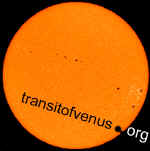1639 Transit of Venus
1761 & 1769 Transits of Venus
1874 & 1882 Transits of Venus
Bibliography
 http://home.hetnet.nl/~smvanroode/history.html
http://home.hetnet.nl/~smvanroode/history.html
Overview with images from many historic sites from which the transits of Venus
was observed and timed; notes the current status of the observing site, such as
remnant equipment or commemorative plaques.
1639 Transit of Venus
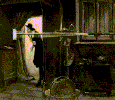 http://www.transit-of-venus.org.uk/conference/history.html
http://www.transit-of-venus.org.uk/conference/history.html
Extensive history of Jeremiah Horrocks and his observation of the 1639
transit; includes excellent background information, local knowledge, images, and
references. Information by Paul Marston.
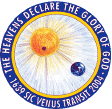 http://www.hoolecechurch.org.uk/main.htm
http://www.hoolecechurch.org.uk/main.htm
The Hoole C.E. Church website features Jeremiah Horrocks, St. Michael Church,
and the events commemorating and celebrating the transit, with Sir Patrick Moore
serving as the Honorary Patron.
 hoole.htm
hoole.htm
Destinations in England related to the transit of Venus, with emphasis on
Jeremiah Horrocks.
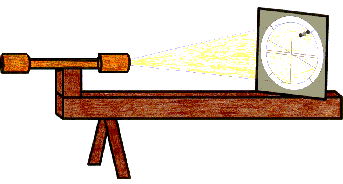 http://www.uclan.ac.uk/facs/science/physastr/misc/horrock.htm
http://www.uclan.ac.uk/facs/science/physastr/misc/horrock.htm
Basic background on Jeremiah Horrocks, his observing device, and a later painting of Horrocks observing 1639 transit of Venus, by Eyre
Crowe. From Paul Marston's chapter on Horrocks from the University
Certificate in the History of Astronomy: "Presently on loan from the
Walker Gallery and hanging in the Liverpool Museum Planetarium is a famous
painting by Eyre Crowe BA. The painter said he modeled the room on that in Carr
House, which he claimed in 1891 to have visited, though the Puritan outfit seems
unlikely and elaborate equatorial telescopic apparatus unhistorical. The
painting is now very dark, and is unclear without computer enhancement."
http://www.longtononline.co.uk/his_horrocks.html
Detailed background on Jeremiah Horrocks and William Crabtree, from Allen Chapman.
 http://www.lancashirechurches.co.uk/muchhoole.htm
http://www.lancashirechurches.co.uk/muchhoole.htm
St. Michael Church at Much Hoole, with window that commemorates local resident
Jeremiah Horrocks.
 http://www.astleyhall.co.uk/exhibitions.html
http://www.astleyhall.co.uk/exhibitions.html
Astley Hall Museum and Art Gallery plans exhibits and collaborations pertaining
to Jeremiah Horrocks.
http://www.venus-transit.de/1639/horrox.htm
Excerpts from Horrocks' transit of Venus notes.
http://maui.uclan.ac.uk/pasm-dlearning/history/TheTransitofVenus.pdf
Chapter 17 from Horrocks' book; PDF file.
http://dlib.stanford.edu:6520/cgi-pbin/list_all_pdf.pl
Original publications scanned by Stanford University Libraries & Academic
Information Resources and offered online, including:
- http://dlib.stanford.edu:6520/text1/dd-ill/transit-memoir.pdf
Memoir of the life and labours of Jeremiah Horrocks, by Rev. Arundell Blount Whatton; and the entire The Transit of Venus Over the Sun by Jeremiah Horrocks; 1639 (10.6 MB). - http://dlib.stanford.edu:6520/text1/dd-ill/transits-venus.pdf
A Popular Account of Past and Coming Transits, by Richard Proctor; 1882 (30.7 MB)
 http://www.liv.ac.uk/~ggastro/images3/Image14.jpg
http://www.liv.ac.uk/~ggastro/images3/Image14.jpg
Photograph of book with Horrocks' observation recorded; from Liverpool
Astronomical Society exhibit.
 crabtree.jpg
crabtree.jpg
Print of Ford Madox Brown's depiction of William Crabtree witnessing the 1639
transit of Venus. See the Internet
caveat for assorted online descriptions of this event.
1761 & 1769 Transits of Venus
 doppel.jpg
doppel.jpg
Venus in her chariot passes between the sun and earth; from Johann Doppelmayer's
Atlas Coelestis, 1742.
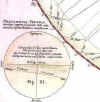 doppel_predict.jpg
doppel_predict.jpg
In 1742, two decades before the next transit would be visible, Johann
Doppelmayer's Atlas Coelestis touted the upcoming 1761 transit and
illustrated Venus' predicted path across the sun. This side-view of the
sun shows the path of Venus transiting from left to lower right in 1761. A
similar descending transit will occur June 8, 2004. Above the sun is the
figure caption, which reads :
The very rare phenomenon of Venus
whose body will pass like a spot
beneath the shining globe of the Sun.
The text within the sun's body reads:
The conjunction of the Sun with Venus
in the year 1761 on the day June 6,
at 1:46 PM at Nuremberg according to the calculation
of Halley, seen near the descending node.
Translations are courtesy of Bruce Stephenson,
Director of the History of Astronomy Department at the Adler
Planetarium and Astronomy Museum in Chicago.
 http://www-astronomy.mps.ohio-state.edu/~pogge/Ast161/Unit4/venussun.html
http://www-astronomy.mps.ohio-state.edu/~pogge/Ast161/Unit4/venussun.html
Humorous summary of global expeditions to time the Venus transits of 1761 & 1769, with emphasis on the personal
challenges and travails.
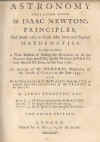 ferguson.htm
ferguson.htm
James Ferguson authored Astronomy Explained Upon Sir Isaac Newton's
Principles and Made Easy to Those Who Have Not Studied Mathematics; third edition, 1764.
Posted are excerpted images.
Plate XVII from James Ferguson's “Astronomy Explained..."

Background on astronomer and frustrated observer Guillaume-Joseph-Hyacinthe-Jean-Baptiste
Le Gentil de la Galaziere (aka Le Gentil).
 Plate
V
Plate
V
Out of Old Books (Le Gentil and the Transit of Venus), by Helen Sawyer
Hogg; scanned from Journal of the Royal Astronomical Society of Canada, 1951,
and provided by NASA Astrophysics Data
System (ADS). This four-part series of articles chronicles Le Gentil's
thwarted efforts as well as his triumphs, with English translations excerpted
from Le Gentil's memoirs:
- 2/1951 Expedition beginnings to frustrating 1761 sighting at sea; years in Manila;
- 4/1951 Departure from testy Manila; two experiences at sea, including the arguing pilot and sulking captain;
- 6/1951 Le Gentil recounts the cloudy morning of the thwarted 1769 transit; nearly shipwrecked trying to sail home;
- 8/1951
Trip home, looted estate, eventual retirement..
 http://www.bdl.fr/Granpub/Promenade/pages6/608.html
http://www.bdl.fr/Granpub/Promenade/pages6/608.html
Painted ceiling of the Paris Observatory shows Venus passing in front of the
sun; additional transit of Venus material (French text).
 http://www.klima-luft.de/steinicke/ngcic/persons/legentil.htm
http://www.klima-luft.de/steinicke/ngcic/persons/legentil.htm
Picture of Paris Observatory in 17th century, at which Le Gentil observed.
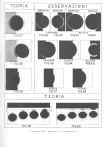 http://www.bo.astro.it/~biblio/sma/page/venere_05_06_1761.html
http://www.bo.astro.it/~biblio/sma/page/venere_05_06_1761.html
Bibliographical and archival records from the Department of Astronomy
of the University of Bologna (Italy), featuring manuscripts of observations made
in Bologna by Eustachio Zanotti; includes images and resources from transits in
addition to the 1761 records. (Italian; a link with some English
translation is at http://www.bo.astro.it/~biblio/Archives/copertina.html.)
http://home.hetnet.nl/~smvanroode/venustransit/eng/planmanhis.html
"Anders Planman (1724–1803) was an outstanding Swedish astronomer and
professor of natural philosophy in the University of Åbo (Turku, Finland),
primarily engaged with the problem of the solar parallax. He devoted numerous
articles on the reduction of various eighteenth century observations of the
transits of Venus, among which were his own – Planman observed both 1761 and
1769 transits from the city of Cajaneborg (Kajaani, Finland);" from Steven
M. van Roode.
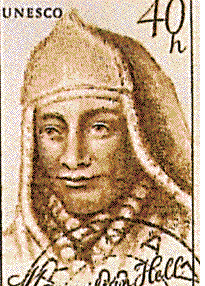 http://www.faculty.fairfield.edu/jmac/sj/scientists/hell.htm
http://www.faculty.fairfield.edu/jmac/sj/scientists/hell.htm
Postage stamp of Father Maximilian Hell commemorating his expedition to Lapland
for the 1769 transit of Venus; accompanying story details the besmirching of
Father Hell, who eventually got back his good name.
 http://www.th.physik.uni-frankfurt.de/~jr/gif/stamps/s_hell.jpg
http://www.th.physik.uni-frankfurt.de/~jr/gif/stamps/s_hell.jpg
A good image of a stamp of Maximilian Hell, S.J.
"Transits, Travels and Tribulations," a five part series (three are online) by J. Donald Fernie for American Scientist:
- (Not online) Part I: an introduction to the transit of Venus and the method of Halley (timing both ends of transit from one site) versus the method of Delisle (timing two individual contacts from two sites).
- (Not online) Part II: the British expeditions to observe the 1761 transit--that of Mason and Dixon to South Africa, and Winthrop’s Harvard expedition to Newfoundland. In addition, the misfortunes of a French expedition, that of Pingré to the island of Rodrigues in the Indian Ocean.
- http://www.americanscientist.org/template/AssetDetail/assetid/28549
Transits, Travels and Tribulations, III March-April 1998
Part III: the two other French expeditions of 1761, that of Jean Chappe d’Auteroche to Siberia, and of Guillaume-Joseph-Hyacinthe-Jean-Baptiste Le Gentil de la Galaisière to India. - http://www.americanscientist.org/template/AssetDetail/assetid/27742
Transits, Travels and Tribulations, IV September-October 1998
Part IV: two of the other 1769 expeditions-- Jean Chappe d’Autoroche to Baja California, and William Wales to Fort Prince of Wales, a Hudson’s Bay Company fur-trading post in northern Canada. - http://www.americanscientist.org/template/AssetDetail/assetid/26610
Transits, Travels and Tribulations, V March-April 1999
Part V: the voyage of Captain James Cook and results of the expeditions.
http://coombs.anu.edu.au/~cookproj/archive/royal_society/green.html#top
XLIII. Astronomical Observations made, by Appointment of the Royal
Society, at King George's Island in the South Sea; by Mr. Charles Green,
formerly Assistant of the Royal Observatory at Greenwich, and Lieut. James
Cook,* of His Majesty's Ship the Endeavour. p. 397.

Point Venus (on right side of panorama) and Matavai Bay, Tahiti, from which
Captain James Cook observed the 1769 transit of Venus; image courtesy of Eric
Schreur, Kalamazoo Valley Museum. (492 KB)
 http://www.nla.gov.au/collect/treasures/mar_treasure.html
http://www.nla.gov.au/collect/treasures/mar_treasure.html
Cook's view from Point Venus; from the National Library of Australia.
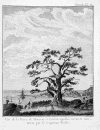 matavai.gif
matavai.gif
18th century view of Matavai Bay, Tahiti, at which Cook observed the
transit.
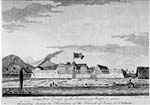 http://www.mariner.org/age/cook.html
http://www.mariner.org/age/cook.html
Venus Fort, Erected by the Endeavour's People to secure themselves during
the Observation of the Transit of Venus, at Otaheite.
http://star.arm.ac.uk/history/transit.html
Drawings of the Transit of Venus by Captain James Cook and Charles Green, from
the Armagh Observatory.
 http://www.lhl.lib.mo.us/pubserv/hos/voyages/cook.html
http://www.lhl.lib.mo.us/pubserv/hos/voyages/cook.html
Cook's and Green's illustrations of "black drop" effect; from Linda
Hall Library collection.
 http://www.jcu.edu.au/aff/history/southseas/
http://www.jcu.edu.au/aff/history/southseas/
South Seas Project
- http://www.jcu.edu.au/aff/history/southseas/journals/index.html
Endeavour journals and map index.- http://www.jcu.edu.au/aff/history/southseas/journals/maps/17690628.html
Endeavour journals and interactive map.- http://www.jcu.edu.au/aff/history/southseas/journals/maps/contents.html
Interactive maps of the Endeavour voyages.- http://www.jcu.edu.au/aff/history/southseas/journals/maps/17690628.html
Map of Cook's Circuit of Tahiti, Windward Is., 26 June-1July, 1769.- http://www.jcu.edu.au/aff/history/southseas/biogs/P000085b.htm
Brief summary of the role of transits in determining the Astronomical Unit.- http://www.jcu.edu.au/aff/history/southseas/journals/Parkinson/045.html
Sydney Parkinson's data for the transit, recorded in his journal.
http://www.kiasma.fi/arkisto/transitofvenus/text54.html
Excerpts from Captain James Cook's description of his transit of Venus
experience (in old calendar dates).
 cook_tent.jpg
cook_tent.jpg
While the lonely crew of the Endeavour
may have extricated nails from the ship’s hull to barter for favors, Captain
James Cook and expedition scientist Charles Green witnessed and recorded
the “black drop” effect. Captain James Cook's observation tent;
one source claims this is a Tahiti field drawing from Cook's French Edition,
1769; another source suggests more likely it is the observatory designed for Cook's third
voyage.
 http://www.CaptainCookSociety.com
http://www.CaptainCookSociety.com
Captain Cook Society
 http://www.barkendeavour.com.au/
http://www.barkendeavour.com.au/
HM Bark Endeavour Foundation actively sails and exhibits a replica of the vessel
James Cook commanded during the 1769 expedition to Tahiti..
http://www.pacificislandtravel.com/books_and_maps/captaincook4.html
The secret mission of Capt. James Cook.
 http://www.npg.si.edu/exh/franklin/winth.htm
http://www.npg.si.edu/exh/franklin/winth.htm
Harvard professor John Winthrop poses with his telescope and points to his
transit of Venus diagram in painting.
 http://www.rootsweb.com/~usgenweb/pa/montgomery/1picts/6chart.jpg
http://www.rootsweb.com/~usgenweb/pa/montgomery/1picts/6chart.jpg
Chart: "Projection of the Transit of Venus over the Sun as observed at
Norriton in Pennsylvania June 3, 1769."
http://ftp.rootsweb.com/pub/usgenweb/pa/montgomery/history/local/mchb0001.txt
History of Montgomery County, PA; edited by Theodore W. Bean, 1884;
included is David Rittenhouse's account of his observation of the transit of
Venus as seen from the Norriton Observatory.
"Norriton township...enjoys a world-wide celebrity in having had situated within its boundaries the "Norriton Observatory," at which place astronomical observations were made, and reported as "An Account of the Transit of Venus over the Sun's Disk, observed at Norriton, in the County of Philadelphia and Province of Pennsylvania, June 3, 1769."
 rittenhouse-log.htm
rittenhouse-log.htm
Log observatory David Rittenhouse built for the 1769 observations at his
Norriton farm; image courtesy of Historical Society of Montgomery County.
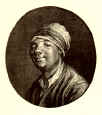 http://www.nhm.org/research/publications/Baja_Cal_Travel/baja46.html
http://www.nhm.org/research/publications/Baja_Cal_Travel/baja46.html
Book: The 1769 Transit of Venus, The Baja California Observations of Jean-Baptiste
Chappe d'Auteroche, Vicente de Doz, and Joaquín Velázques Cárdenas de León; edited
by Doyce B. Nunis, Jr.; published by the Natural History Museum of Los Angeles
County; 1982.
http://www.arm.ac.uk/history/richobs.html
Image of Richmond Observatory, "built by George III, specifically to
observe the Transit of Venus in 1769;" from the Armagh Observatory.
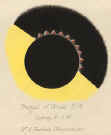 http://www.melbourneobservatory.com
http://www.melbourneobservatory.com
Transit of Venus site emphasizing the 18th and 19th century transits. Two of Janssen's photo-heliographic
devices are apparently in Australia--one in Melbourne and one in Sydney; from
the Melbourne Observatory.
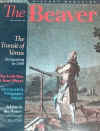 beaver_mag.jpg
beaver_mag.jpg
The Transit of Venus: Stargazing in 1769; from The Beaver--Canada's
History Magazine, April-May 2003.
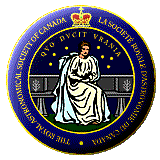 www.rasc.ca/historical
www.rasc.ca/historical
Eighteenth and nineteenth century transits from the Canadian perspective; from Peter Broughton
and the Royal Astronomical Society of Canada (RASC).
1874 & 1882 Transits of Venus
 usno.htm
usno.htm
A collection of photographs from the US Naval
Observatory depict life during 19th century expeditions to time a
transit of Venus.
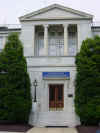 http://www.usno.navy.mil/pao/History/ToV_Chapter_7.htm
http://www.usno.navy.mil/pao/History/ToV_Chapter_7.htm
"The
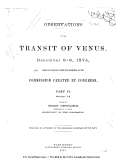 http://adsbit.harvard.edu/cgi-bin/nph-iarticle_query?bibcode=1881otv..book....
http://adsbit.harvard.edu/cgi-bin/nph-iarticle_query?bibcode=1881otv..book....
1N&db_key=AST&page_ind=263&plate_select=NO&data_type=GIF&type=SCREEN_GIF
(Either cut and paste the two halves of the long URL into your browser or
simply click the icon at left.)
From the rare book collection of the U.S. Naval Observatory, this unpublished
report details the results of each party in the American Transit of Venus Expeditions of 1874 and
1882.
 http://canopus.saao.ac.za/~wpk/tov1882/tovwell.html
http://canopus.saao.ac.za/~wpk/tov1882/tovwell.html
Observations from Wellington, South Africa, of the 1882 transit of Venus;
details the role of amateur women astronomers Abbie Park Ferguson and Mary
Elizabeth Cummings alongside the American expedition team led by Simon Newcomb.
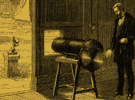 http://web.inter.nl.net/users/anima/chronoph/janssen/index.htm
http://web.inter.nl.net/users/anima/chronoph/janssen/index.htm
The astronomer Pierre-César Jules Janssen devises a "photographic
revolver" to capture the moment of Venus passing between the sun and the
earth. Series of images shows transit near contact.
 http://home.europa.com/~telscope/ToV.1874.spectr.obs.doc
http://home.europa.com/~telscope/ToV.1874.spectr.obs.doc
Spectroscopic observations of the 1874 transit of Venus in
monochromatic light, from Peter Abrahams, considers reports that the
sun was seen in
monochromatic light before the 1874 transit, while two observers recorded Venus
against the chromosphere during the 1874 transit.
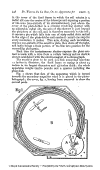 http://adsbit.harvard.edu/cgi-bin/nph-iarticle_query?journal=MNRAS&year=1874&volume=..
http://adsbit.harvard.edu/cgi-bin/nph-iarticle_query?journal=MNRAS&year=1874&volume=..
34&letter=.&db_key=AST&page_ind=350&plate_select=NO&data_type=GIF&type=SCREEN_GIF
(Either cut and paste the two halves of the long URL into your browser or
simply click the icon at left.)
The design of Janssen's "photographic revolver" is illustrated and
described; from NASA Astrophysics Data
System (ADS).
There are two articles, one after the other, as noted by Peter Abrahams:
De la Rue, Warren. On a Piece of Apparatus for carrying out M.
Janssen's Method of Time-Photographic Observations of the Transit of Venus.
M.N.R.A.S. 34 (May 1874) 347-353.
Capello, J. On an Apparatus Designed for the Photographic Record of the
Transit of Venus. M.N.R.A.S. 34 (May 1874) 354-356 (translation
of letter to De la Rue.
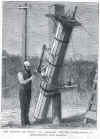 ILN excerpts
ILN excerpts
Headlines and drawings from the Illustrated London News report on the
efforts of expeditions to Mauritius, Rodriguez Island, Cairo, and New Zealand.
 ILN-Hawaii.jpg
ILN-Hawaii.jpg
A station in Hawaii, from the Illustrated London News, 05 December 1874.
 ILN-Rodriguez.jpg
ILN-Rodriguez.jpg
Triangulation on Rodriguez Island, from the Illustrated London News, 24 October
1874.
http://dlib.stanford.edu:6520/cgi-pbin/list_all_pdf.pl
Original publications scanned by Stanford University Libraries & Academic
Information Resources and offered online, including:
- http://dlib.stanford.edu:6520/text1/dd-ill/transits-venus.pdf
A Popular Account of Past and Coming Transits, by Richard Proctor; 1882 (30.7 MB) - http://dlib.stanford.edu:6520/text1/dd-ill/transit-1874-1.pdf
Account of observations of 1874 transit, edited by Sir George Airy; (35.5 MB). - http://dlib.stanford.edu:6520/text1/dd-ill/transit-1874-2.pdf
Accounts of expedition to Waimea, Hawaii, by R. Johnson; expedition to Kerguelen Island by Corbet and Coke; 1874; (34.6 MB).
 http://www.ifa.hawaii.edu/users/steiger/post_cook.htm
http://www.ifa.hawaii.edu/users/steiger/post_cook.htm
The first record of scientific astronomical observations being made from Hawai`i
appears to be that of a British expedition on 8 December 1874. Captain G. L.
Tupman of the HBM Scout observed a transit of Venus. King David
Kalakaua, who reigned over the Kingdom of Hawai`i from 1874 to 189l, established
the first permanent observatory in Hawai`i, in 1883.
http://web.syr.edu/~rcranger/wardv.html
Letters from photographer Ward V. Ranger relating the 1874 Transit of Venus Expedition
to China; correspondence of the Syracuse Journal from Peking, China,
September 25, 1874.
 http://www.dgcch.unam.mx/coordinacion_bibliotecas/frame2/1874.htm
http://www.dgcch.unam.mx/coordinacion_bibliotecas/frame2/1874.htm
Book about the Mexican expedition to observe the 1874
transit of Venus at Japan; from Marco Moreno Corral and the National Institute of Astronomy at UNAM,
Mexico; (in Spanish).
 http://angelfire.com/my/platform/transvenus.html
http://angelfire.com/my/platform/transvenus.html
Observation camp from Woodford, Australia, for 1874 transit.
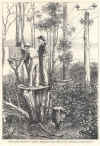 victoria.jpg
victoria.jpg
"The Recent Transit of Venus--Preparing for Work at an Australian Bush
Station." Sketch from the May 8, 1875, issue of The Graphic:
"Drawn by Mr. A.C. Allan, the Inspector-General of Plans and Survey, who
was one of the officers appointed in conjunction with the Government Astronomer
(Mr. R.J. Ellery, F.R.S.) to carry out the observations in the Colony of
Victoria."
 http://www.astro.univie.ac.at/~wuchterl/Kuffner/2004/Venustransit/russell_vt.html
http://www.astro.univie.ac.at/~wuchterl/Kuffner/2004/Venustransit/russell_vt.html
Illustrations (plates) from the book Observations of the Transit of Venus,
9th December 1874, by Henry Chamberlain Russell;
from the Institute for Astronomy at the University of Vienna.
 http://rathnasree.htmlplanet.com/Nursinga%20Rao's%20Observations.htm
http://rathnasree.htmlplanet.com/Nursinga%20Rao's%20Observations.htm
1874 Transit Observations of A.V.
Narsinga Rao, at Visakhapatnam, India; from N. Rathnasree and Sanat Kumar, Nehru
Planetarium, New Delhi.
 http://rathnasree.htmlplanet.com/Pathani.htm
http://rathnasree.htmlplanet.com/Pathani.htm
"Samanta Chandrasekhar - a Siddhantic Astronomer from a remote region in
Orissa who had perhaps been unaware of theoretical predictions for this transit
and observed it through predictions of his own--rather an anachronistic 17th
century Astronomer in the late 19th century"; from N. Rathnasree, Nehru
Planetarium, New Delhi.
http://www.bweaver.nom.sh/gill/gill.htm
"Six Months in Ascension: An Unscientific Account of a Scientific
Expedition by Mrs. Gill;" details six months on Ascension Island by
Mrs. David Gill, printed 1878. Recognizing the limits of the transit of
Venus for calculating the solar parallax, David Gill set out to measure the
parallax of Mars, which was nearing opposition, using a heliometer. His
wife Isobel accompanied him, and was vital in searching for and finding a more
suitable site for observing than the original Georgetown, which was beset by
poor weather.
 http://www.ras.org.uk/html/library/vtransit.html
http://www.ras.org.uk/html/library/vtransit.html
Royal Astronomical Society Library features images from 19th century transits.
 http://www.astro.univie.ac.at/~wuchterl/Kuffner/2004/Venustransit/VENUS_Transit1874/Venus33.jpg
http://www.astro.univie.ac.at/~wuchterl/Kuffner/2004/Venustransit/VENUS_Transit1874/Venus33.jpg
"Waiting for the Transit of Venus, Eden; Plate XXXVI."
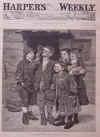 harpers-whole.jpg
harpers-whole.jpg
Cover of Harper's Weekly depicts children watching the transit by staring
at the sun and by viewing the sun through smoked glass--both very dangerous
practices.
 http://skyandtelescope.com/observing/objects/sun/article_1187_1.asp
http://skyandtelescope.com/observing/objects/sun/article_1187_1.asp
All 147 glass negatives recently discovered in the vault of the Lick
Observatory are digitally stitched together into a movie, which "shows
Venus's silhouette flickering strangely as it marches across the Sun's
face" in 1882. From Anthony Misch and William Sheehan.
 http://www.usno.navy.mil/library/rare/rare.html
http://www.usno.navy.mil/library/rare/rare.html
Photographic plates (dry collodion emulsion) of the 1882 transit of Venus; from
the Naval Observatory and Transit of Venus Commission expedition. North is
up, east is left.
http://www.detroitobservatory.umich.edu/Chronologypage3.html
The University of Michigan Detroit Observatory chronology notes 1882
"transit of Venus observations take place, using the Students'
Observatory."
 http://www.venus-transit.de/1882/
http://www.venus-transit.de/1882/
World visibility map from 1882.
http://www.aas.org/publications/baas/v27n4/aas187/S035002.html
"The American Transit of Venus Expeditions of 1882, including San Antonio,"
by Steven J. Dick (USNO); from the Bulletin of the American Astronomical Society,
1995.
http://www.spri.cam.ac.uk/resources/expeditions/
Index to British, French, American, and German expeditions to Antarctica; from
Scott Polar Research Institute.
http://www.jb.man.ac.uk/~abstract/abstracts/JD6P.html
Abstract states Italian expedition confirmed the existence of Venus atmosphere
by observing its spectrum for first time.
 http://home.hetnet.nl/~smvanroode/venustransit/eng/ballhis.html
http://home.hetnet.nl/~smvanroode/venustransit/eng/ballhis.html
Irish astronomer Sir Robwert Stawell Ball's observation of the 1882 transit of
Venus at Dunsink.
http://cdl.library.cornell.edu/cgi-bin/moa/pageviewer?root=%2Fmoa%2Fmanu%2Fmanu0015%2F&tif=00042.TIF&cite=&coll=moa&frames=1&view=50
A brief February 1883 report.
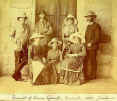 http://www.library.uq.edu.au/fryer/hume/web/372.html
http://www.library.uq.edu.au/fryer/hume/web/372.html
Photograph of "Transit of Venus Group, December 1882, Jimbour" from
the University of Queensland. (See images 372, 373, and 374.)
 http://www.astro.yale.edu/dept/overview/history.html
http://www.astro.yale.edu/dept/overview/history.html
Photograph of "the Yale Heliometer (the only one in America), delivered on
time for measurements of the Transit of Venus on Dec. 6, 1882."
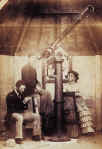 http://www.nmsi.ac.uk/piclib/subjectdetail.asp?sub=nat&startcount=37
http://www.nmsi.ac.uk/piclib/subjectdetail.asp?sub=nat&startcount=37
" Photograph showing two men and a woman observing the 1874 transit of
Venus through a telescope, Station D, Equatorial 12, 8-9 December 1874."
 http://www.geh.org/ar/strip47/htmlsrc/lanternsld_sum00040.html
http://www.geh.org/ar/strip47/htmlsrc/lanternsld_sum00040.html
Multiple images on this page, such as "Transit of Venus Huts erected at
Naval Observatory; transparency, collodion on glass." From the George
Eastman House Still Photograph Archive.
 http://www.snellenburg.com/Newpages/clocks/dent/dent_mahogany_regulator_with_zin.htm
http://www.snellenburg.com/Newpages/clocks/dent/dent_mahogany_regulator_with_zin.htm
Clocks used by British transit expeditions in 1874 and 1882.
 www.rasc.ca/historical
www.rasc.ca/historical
Eighteenth and nineteenth century transits from the Canadian perspective; from Peter Broughton
and the Royal Astronomical Society of Canada (RASC). -
http://cho.uconn.edu/cgi-bin/scandoc.cgi?app=22&folder=2679&doc=1
and http://cho.uconn.edu/cgi-bin/scandoc.cgi?app=22&folder=2680&doc=1
Illustrations of the 1882 German expedition to Hartford, Connecticut.
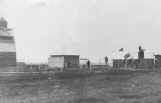 http://www.vt-2004.org/Background/Infol2/EIS-F7.html
http://www.vt-2004.org/Background/Infol2/EIS-F7.html
The 1882 Transit of Venus as Seen from Chile; from Hilmar W. Duerbeck.
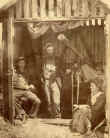 http://www.harryatkinson.com/
http://www.harryatkinson.com/
"The 1882 transit observed in Nelson, New Zealand, by
a local astronomer, Arthur Samuel Atkinson, on behalf of the Royal
Society."
 cowans.jpg
cowans.jpg
"Boudoir Photograph of Territorial Transit of Venus Party, anonymous image
of a large mixed party of observers...likely of local Denver citizenry with
several telescopes and a few theodolites set up for viewing the
transit." Image courtesy of Cowans Auctions, Inc., Cincinnati, Ohio.
Bibliography, Etc.
http://www.phys.uu.nl/~vgent/venus/venustransitbib.htm
Most extensive bibliography of original sources relating to transits of Venus, with
links to many of the original publications; from R.H. van Gent.
http://www.dsellers.demon.co.uk/venus/ven_ch7.htm
Useful references and links from David Sellers.
http://www.dsellers.demon.co.uk/venus/ven_ch8.htm
Edmond Halley's admonition of 1716, in which he proposes a method to determine
solar parallax and measure the distance to the sun by timing a transit of Venus
from multiple sites across the globe.
 proctor.htm
proctor.htm
Images excerpted from Transits of Venus, A Popular Account of Past and
Coming Transits, by Richard A. Proctor; 1875; includes link to pdf
file of the book.
http://adsbit.harvard.edu/cgi-bin/nph-iarticle_query?bibcode=1882MNRAS..43...41J
On the Probable Assyrian Transit of Venus by Rev. S.J. Johnson (1882)
suggests an Assyrian tablet may refer to an ancient recorded transit, as
mentioned in a previous journal.
http://www.nojum.net/articles/venustransit/history/
Pouria Nazemi asserts in Nojum, The Astronomy Magazine of Iran that the
Persian Islamic scientist Avicenna witnessed the 1032 transit of Venus.
Avicenna claims in his book Shifa, "I say that I have seen Venus as
a spot on the Sun’s face."
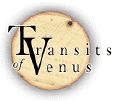 http://transits.mhs.ox.ac.uk/
http://transits.mhs.ox.ac.uk/
A browseable database of historical instruments and images from collections
around the world; from the Scientific Instrument Commission (SIC) of the
International Union of the History and Philosophy of Science. Institutions
and individuals are invited to develop the site by contributing their own
material.
